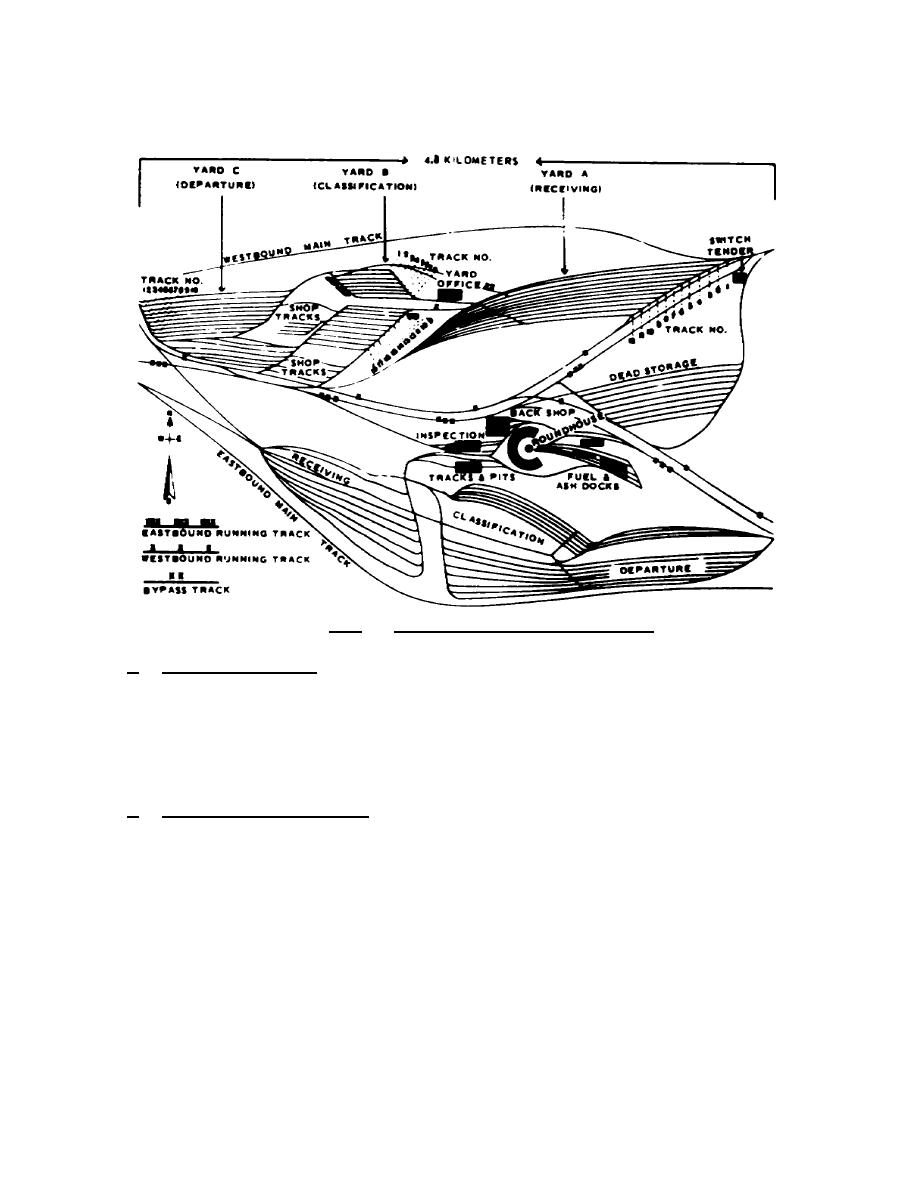
subdivided into three yards: receiving, classification, and
departure. Figure 1.1 illustrates such an arrangement.
Figure 1.1. Typical Progressive Yard.
a. Receiving yard. Inbound trains from the westbound main line
pull into the receiving yard marked A in figure 1.1. Yard clerks
make a track check by recording the car initials, numbers, and seal
numbers, while car inspectors examine the cars for defects.
Switching lists are prepared from the track check when it is
completed.
b. Classification yard. When a train is ready to be switched, a
yard engine shoves the train out on the switching lead between yards
A and B shown in figure 1.1. The individual cars or groups of cars
are then switched to the various tracks in yard B, the classification
yard, according to a switching list that specifies the track number
for each car. The classification yard is frequently a hump yard that
contains an artificial hill over which the cars are pushed. Gravity
causes them to roll down the leads, and switchtenders line the
switches to permit cars to enter their proper tracks. Speed is
controlled by yard brakemen, or car riders, who ride the cars and
manipulate the handbrakes. Or car retarders
4



 Previous Page
Previous Page
